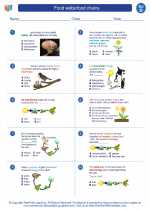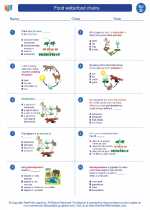Food webs/food chains -> temperate forest
Temperate Forests
Temperate forests are a biome found in moderate climate regions with distinct seasons. They are characterized by a wide range of temperatures and a significant amount of precipitation. These forests are known for their diverse flora and fauna, and they play a crucial role in the global ecosystem.
Climate
Temperate forests have four distinct seasons: spring, summer, autumn, and winter. The average annual temperature ranges from 10°C to 20°C. The annual precipitation ranges from 75 cm to 150 cm, with rainfall evenly distributed throughout the year.
Flora
Temperate forests are home to a variety of plant species, including deciduous trees such as oak, maple, beech, and birch. These forests also contain coniferous trees like pine, spruce, and fir. The understory is populated with shrubs, ferns, and mosses, contributing to the rich biodiversity of the biome.
Fauna
The diverse plant life in temperate forests supports a wide range of animal species. Mammals such as deer, bears, foxes, and squirrels are commonly found in these forests. Birds like owls, woodpeckers, and songbirds are also abundant. Amphibians, reptiles, and insects further contribute to the biome's ecological complexity.
Study Guide
- What are the four distinct seasons in a temperate forest?
- Identify two deciduous trees and two coniferous trees commonly found in temperate forests.
- List three animal species that inhabit temperate forests.
- Explain the role of the understory in a temperate forest ecosystem.
- Describe the typical annual precipitation range in temperate forests.
[Temperate Forest] Related Worksheets and Study Guides:
.◂Science Worksheets and Study Guides Fourth Grade. Food webs/food chains

 Activity Lesson
Activity Lesson
 Worksheet/Answer key
Worksheet/Answer key
 Worksheet/Answer key
Worksheet/Answer key
 Worksheet/Answer key
Worksheet/Answer key
 Worksheet/Answer key
Worksheet/Answer key
 Vocabulary/Answer key
Vocabulary/Answer key
 Vocabulary/Answer key
Vocabulary/Answer key
 Vocabulary/Answer key
Vocabulary/Answer key
